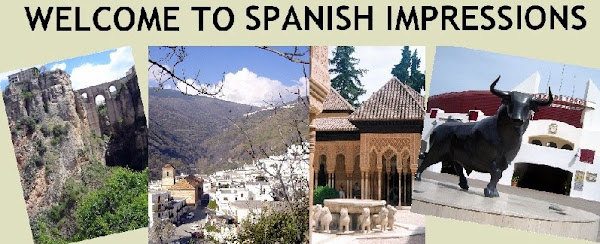Spain has a greater range of landscapes than any other country in Europe. It also has an impressive record for protecting its environment - it was one of the first countries in Europe to establish national parks when, in 1918, the Montaña de Covadonga National Park was established.
Today, this beautiful area is known as the Picos de Europa, situated in the Cantabrian Mountains in northern Spain. Asturias, Cantabria and Castilla y León share it. Back in 1918, only the western part of today's park was included. It had an area of 169.25 km². In 1995, the complete national park was established, with a total area of 646.60 km². It is a spectacular range of jagged limestone mountains that are home to an incredibly diverse range of flora and fauna. It is one of the reasons why the Picos de Europa has achieved UNESCO Biosphere status.
 |
| Picos de Europa Carlos de Haes (Prado) |
Currently, there are 15 national parks in Spain.
Another national park, also created in 1918, is the Ordesa y Monte Perdido National Park. It is another mountainous area and is situated in the Pyrenees of Huesca province in Aragón. This spectacular mountain park is home to Pyrenean chamois, wild boar and great birds like eagles and vultures. The park is included in the UNESCO Biosphere Reserve of Ordesa-Viñamala.
You probably won't remember the name of the other Pyrenean national park! It is located in the province of Lérida in Catalonia. It is the Aigüestortes i Estany de Sant Maurici National Park, a wild mountainous region with peaks rising to over 3000 metres. It has nearly 200 lakes and lots of wildlife - Pyrenean chamois, marmot, ermine, roe deer and golden eagle amongst others.
Galicia is privileged. It has three national parks within its borders. The Dunes of "Corrubedo" National Park is located in the province of A Coruña. It comprises sand dunes and unique wild flora and fauna - all situated in the Barbanza Peninsula.
The "Fragas" of the River Eume National Park is a unique ecosystem in northwest Galicia situated in the environs of the River Eume - well it would be wouldn't it! The Atlantic islands off the coast of Pontevedra province in Galicia constitute an ecosystem of enormous ecological merit.
In 2002, the Illas Atlánticas de Galicia National Park was established to protect both the islands' habitat and the marine environment that surrounds them.
Two spectacular national parks are down in Andalucía - the Doñana National Park and the Sierra Nevada National Park. Both have been declared Biosphere Reserves.
 |
| Iberian Lynx |
The former is located in the provinces of Huelva and Sevilla. It is also known as the Coto de Doñana and is the largest of Spain's national parks. Thousands of migratory birds shelter here as do wild boar, deer, badgers and the endangered Iberian Lynx.
The Sierra Nevada is the highest mountain chain in the Iberian Peninsula. There are many peaks of 3,000 metres including Mulhacen the tallest (3,481m). The city of Granada sits amidst its northern foothills whilst the Alpujarras with its villages of whitewashed houses, lies on its southern slopes. Parts of this mighty range have been included in the Sierra Nevada National Park. There is a diverse range of fauna and flora here, which includes ibex, badger, beech marten, weasel, fox, golden eagle and the Apollo butterfly. There are sixty varieties of flower unique to this park.
 |
| Sierra Nevada nr Puerto de Ragua photo: Robert Bovington |
In the Balearics, a whole load of islands has national park status. The Archipiélago de Cabrera National Park comprises an archipelago - Cabrera and many smaller islands!
 |
| Caldera de Taburiente photo: public domain (Moisecr) |
La Gomera is an unspoiled island and the Garajonay National Park there is a delightful place to walk. It is named after Alto de Garajonay, Gomera's highest peak but what makes the park so spectacular is its subtropical forest made up of laurel-leaved evergreen hardwood trees, reaching up to 40 metres in height. Watch out for lizards and frogs!
Pico del Teide is the highest mountain in Spain. It is actually a volcano and is on the island of Tenerife. In actual fact, the whole island is a volcano so no wonder Tenerife is warm! Seriously though, Teide is currently dormant, having last erupted in 1909. There are a number of small active fumaroles at the summit. They emit hot sulphur dioxide so it gets a bit smelly up there. The volcano and the surrounding area are protected in a national park, the Teide National Park. UNESCO has designated it as a World Heritage Site.
 |
| Teide panorama - public domain Berthold Werner |
Another volcanic island is Lanzarote - there are over 300 volcanoes there and any trip to the island should include a visit to the Timanfaya National Park. It is a bizarre landscape of lava flows. UNESCO granted the park Biosphere status in 1993.
The other two national parks are in Castile-La Mancha. The Tablas de Daimiel National Park is Spain's smallest national park being less than 20 km². It is a nature reserve and home to many bird species. It is situated on the plain of La Mancha, only 30 kilometres from the city of Ciudad Real.
The Cabañeros National Park also contains many bird species - some 200 different types including black vulture, black-winged kite, golden eagle, imperial eagle, eagle owl and stork. There are also wild boar, deer and the Iberian lynx. The park is situated between the provinces of Ciudad Real and Toledo.
 |
| Dehesa in the Cabañeros National Park photo: public domain (Jeromo63) |
more blogs by Robert Bovington...
"Photographs of
| |
"postcards from
| |
"you couldn't make it up!"
| |
"a grumpy old man in
| |
"bits and bobs"
| |
"Spanish Expressions"
| |
"Spanish Art"
| |
"Books About
|


No comments:
Post a Comment